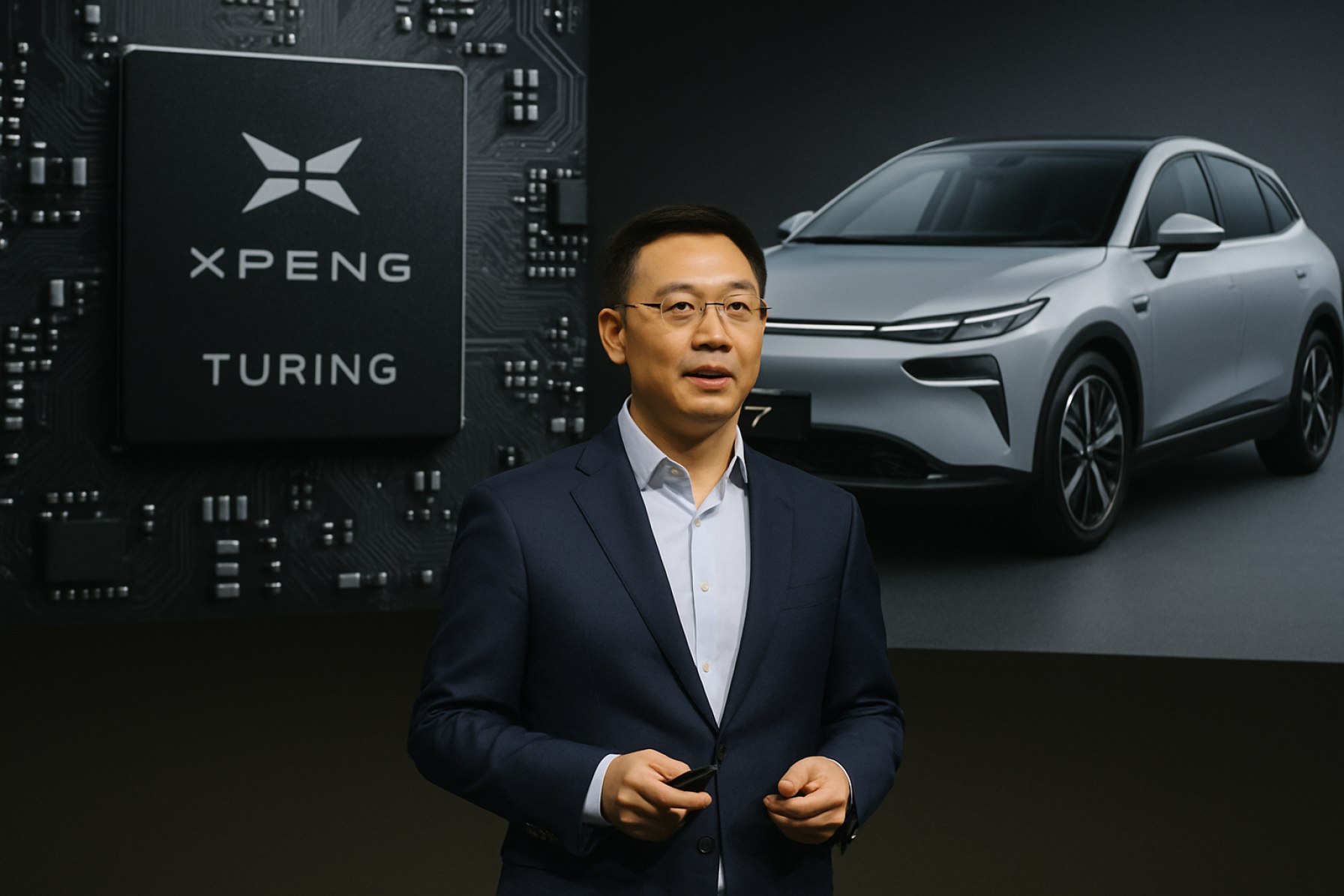XPeng’s Turing AI Chip Sets New Standards for Smart EVs as G7 SUV Eyes Domination in 2025
XPeng disrupts China’s EV market with its powerful Turing chip, debuting in the flagship G7, overtaking rivals in the AI-powered driving race.
- 700 TOPS: Turing chip’s mind-blowing AI computing power, rivaling Nvidia Thor.
- L3 Autonomy: G7 becomes XPeng’s first SUV to deliver Level 3 AI-powered driving.
- 2nd in China: XPeng joins Nio as the only Chinese EV startups mass-producing in-house driving chips.
XPeng just fired the starting gun in China’s AI-powered EV race. The innovative automaker unveiled its revolutionary Turing AI chip, catapulting its latest G7 SUV ahead of the pack. The G7, which officially debuts tomorrow, is poised to be the first intelligent vehicle to ditch Nvidia’s chips in favor of home-grown muscle—and the results are stunning.
XPeng’s move signals a tectonic shift in the global EV landscape, as automakers scramble to control their own AI destinies. Industry-watchers are already calling the Turing chip a game-changer, packing three times the AI computing punch of Nvidia’s Orin X, and boasting a staggering 700 trillion operations per second (TOPS)—on par with Nvidia’s latest Thor platform.
Meanwhile, Nio, XPeng’s chief rival, set the stage earlier in 2024 with its NX9031 chip and ET9 sedan. But XPeng’s leap from Nvidia dependence to self-made silicon is rewriting the rules of the road.
What Does the Turing AI Chip Mean for Drivers?
Q: How Does the Turing Chip Change the Game for G7 Owners?
Imagine a cockpit where AI intuitively manages navigation, safety, and comfort, all while recognizing your voice and gestures. With its 700 TOPS computing power, the Turing chip’s central brain delivers:
- Next-level autonomous driving features, including advanced route planning and object detection.
- Futuristic smart cockpits, where passenger preferences adapt in real time.
- AR-HUD (Augmented Reality Heads-Up Display) that projects crucial driving data and real-world AI alerts on your windshield.
XPeng’s G7 is not just an SUV; it’s a glimpse into the future of mobility.
Q: How Does XPeng’s Tech Stack Up Against Nio and Tesla?
Nio recently rolled out its own smart driving chip, the Shenji NX9031, across several models. Tesla, meanwhile, continues to double down on its FSD chip for Tesla vehicles. But XPeng’s Turing chip raises the stakes, as Chinese EV makers race to build Silicon Valley-caliber brains right at home.
With the G7, XPeng claims not only Level 3 self-driving capability but the flexibility to upgrade and scale its AI to future vehicles—and even to non-EV products like flying cars and robots.
How Can Buyers Benefit From Turing-Powered EVs?
Want to experience a car that adapts to your family? The G7’s AI assistant lets you customize entertainment, climate, and driving style. Its central chip offers responsive performance for city traffic, long road trips, and the unexpected. The AR-HUD feeds speed, road conditions, and smart driving prompts directly into your line of sight, minimizing distractions.
What’s Next for Smart Driving, XPeng, and the EV Industry?
XPeng’s Turing chip will soon power robots and flying cars, signaling a new era of AI mobility. For now, the G7 stakes its claim as the leader—leaving rivals scrambling to catch up. The battle has only just begun, and the winner will shape the future of global transportation.
For more updates on electric mobility, visit XPeng, Nio, or follow the latest EV innovations at Reuters and CNBC.
Ready to drive into the AI future? XPeng’s G7 is just the beginning. Don’t miss out—be the first to experience the revolution.
Quick Takeaways:
- XPeng launches Turing AI chip: 700 TOPS, in-house, Nvidia-free.
- G7 SUV is packed with L3 autonomy, smart cockpit, and AR-HUD.
- XPeng joins Nio in mass-producing smart driving chips—Tesla, watch out.
- The Turing chip isn’t just for cars: robots and even flying vehicles on the horizon.












